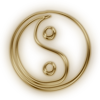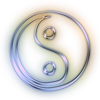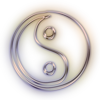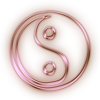The Elements

WOOD

WATER

METAL

FIRE

EARTH
A significant portion of Chinese philosophy revolves around the concept of the five elements and their capacity to interact with and establish connections among natural occurrences. These five elements have been integral to Chinese culture since ancient times. It’s worth noting that outside the Asian sphere, only a limited number of individuals grasp the significance of these elements, particularly in their correlation with the functioning of the Chinese Zodiac.
The five elements—wood, fire, earth, metal, and water—are associated with five primary planets in our Solar System: Jupiter, Mars, Saturn, Venus, and Mercury, respectively. These elements are inherent natural phenomena and are thought to exert both generative and overcoming effects on each other. For instance, wood generates fire, water generates wood, water overcomes fire, fire overcomes metal, and so forth.
Other correlating factors of the five elements
In addition to their generating and overcoming properties, the five elements of the Chinese Zodiac are associated with various attributes such as direction, color, season, body parts, tastes, and senses. For instance, wood is linked to the direction East, the season of Spring, the colors blue or green, the taste of sour, the sense of sight, and the body parts gall bladder, liver, and ring finger. Similarly, the other four elements have their own corresponding correlations.
The attributes associated with the five elements—metal, wood, fire, water, and Earth—shape the characteristics attributed to the twelve animals of the Chinese Zodiac. As each of the twelve animals represents a specific period of time, typically a year (known as the 12 branches), assigning one of the five elements to each of these twelve years results in 60 unique combinations. Thus, instead of following 12-year cycles, the Chinese Zodiac operates within a framework of 60-year cycles.
In Chinese philosophy, another significant concept is Yin and Yang, representing the comparison and balance of complementary forces in life, such as day and night, and femininity and masculinity. These concepts also influence the five elements and the Chinese Zodiac by attributing opposing forces or characteristics to each. For instance, there is both Yin wood and Yang wood, Yin metal and Yang metal, and so forth.
Five elements plus Yin and Yang
When Yin and Yang are integrated into the five elements, the total expands to ten elements or “10 stems,” each with an alternate reading. In the context of the Chinese Zodiac, odd years are considered Yin years, while even years are regarded as Yang.
Understanding the Chinese Zodiac can be complex, but in summary...
According to Chinese belief, your birth year doesn’t just signify your age, but rather your position within a 60-year cycle. The traits associated with the animal signs, along with the interplay of Yin and Yang and the five elements, collectively influence whether a year is considered “auspicious” or “inauspicious,” whether fortune is “favorable” or “unfavorable,” and even the quality of various life stages. This comprehensive system has established the Chinese Zodiac as a potent tool for discerning one’s destiny.
















































